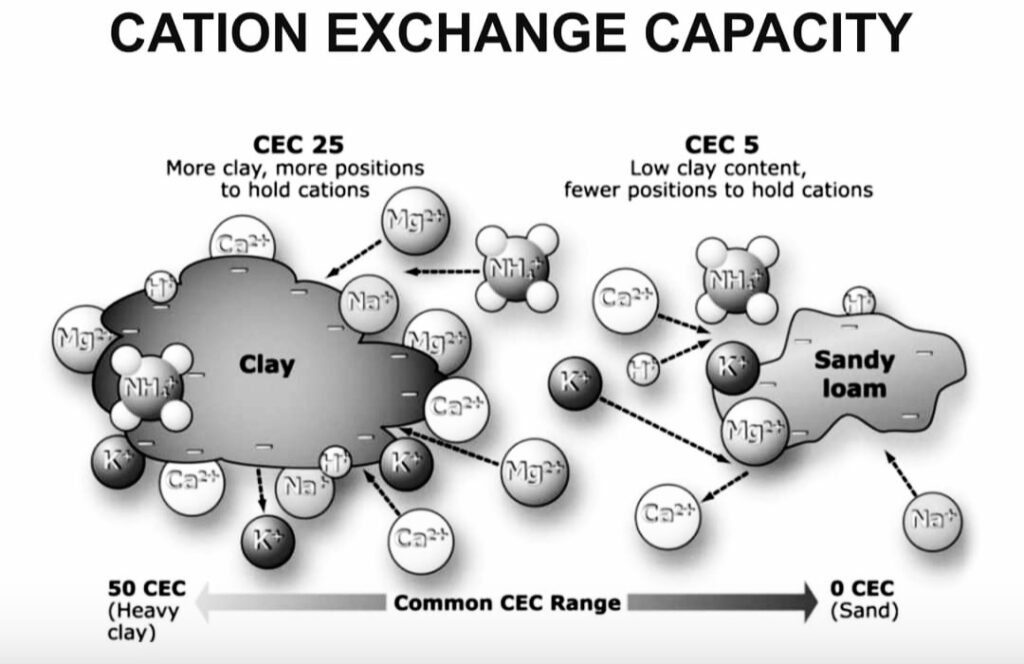
Nutrient movement in soils and nutrient absorption by plants is a complex and essential process for the growth and development of all plant species. Plants rely on a diverse range of nutrients, which are essential and they can be divided into:
1. Macronutrients like nitrogen, phosphorus, potassium, calcium, magnesium, and sulfur and
2. Micronutrients such as iron, manganese, zinc, copper, boron, molybdenum, and chlorine.
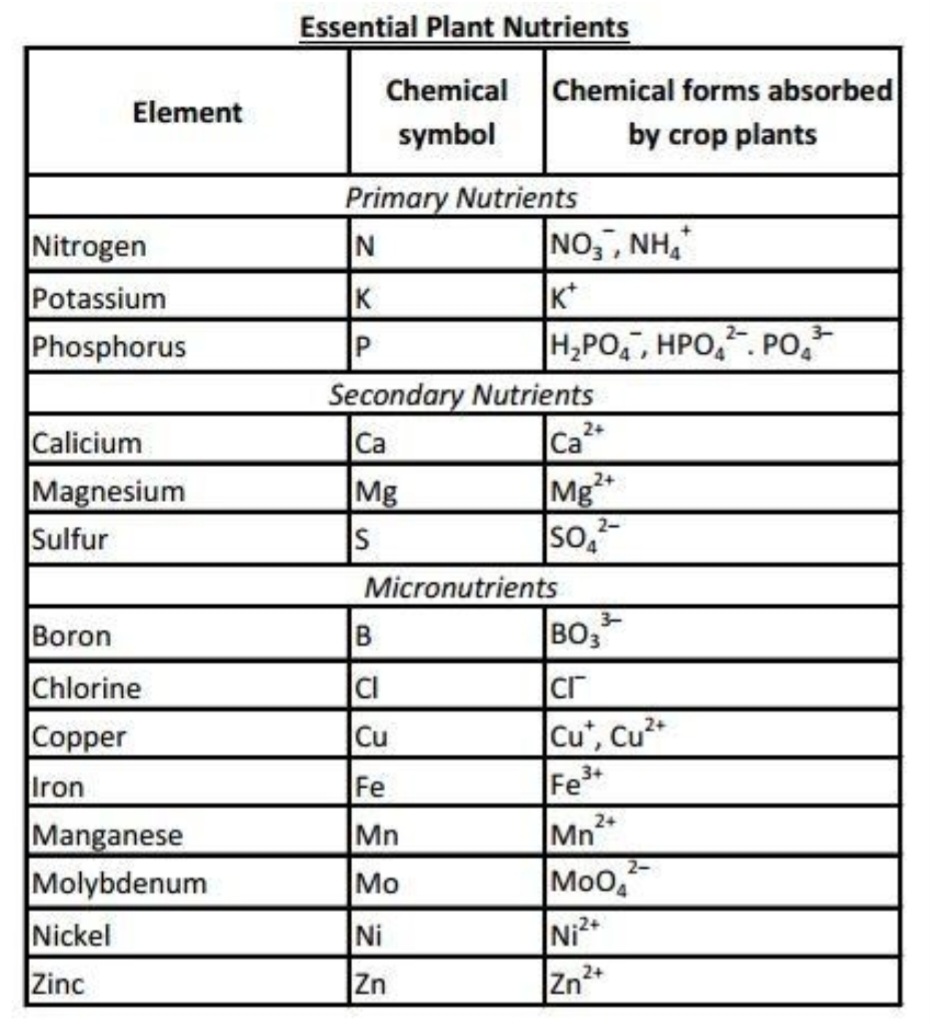
According to Arnon’s Law of Essentiality which state that for a nutrient to be considered essential, a plant must be unable to complete its life cycle without it, and the nutrient must play a specific role in the plant’s metabolic processes. Lack or inadequacy of these essential nutrients leads to deficiency symptoms in plants. For these nutrients to be absorbed by plants, they must be in their ionic forms and dissolved in soil solution. These nutrient sources can be from fertilizers , organic matter, and minerals. Their movement in the soil is influenced by factors such as soil texture, pH levels, moisture content, and root activity. mechanisms govern nutrient movement in soil.
MECHANISMS OF NUTRIENT MOVEMENT IN SOIL. Nutrients move in soil through three main mechanisms:
1. MASS FLOW: It requires water to carry dissolved nutrients in the soil. Nutrients move with water towards plant roots through transpiration, percolation, or evaporation. The amount of nutrients transported depends on the rate of water flow.
2. DIFFUSION: Nutrients move from areas of higher concentration in the soil to lower concentration at the root surface. This process is similar to adding sugar to water and is relatively slow compared to mass flow.
3. ROOT INTERCEPTION: Roots physically come into contact with nutrient-rich soil particles.
THEORIES THAT BACK NUTRIENT ABSORPTION BY PLANT ROOTS
When it comes to nutrient absorption by plant roots, some theories and mechanisms come into play……
a. The Carbonic Acid Exchange Theory: This theory explains how plant roots release carbon dioxide, which, in interaction with soil water, forms carbonic acid, aiding in the exchange of nutrient ions.
b. Bennet-Clark’s Protein Lecithin Theory: This theory describe how certain specific proteins and lipids in root cell membranes play a role in selective nutrient absorption, potentially involving carrier proteins.
c. The Contact Exchange Theory: This theory discusses the importance of direct contact between nutrient ions and root cell membranes.
d. Donnan’s Equilibrium Theory: The theory discuss the role of electrical charge and ion gradients in root nutrient absorption, while Ion Pumps and ATPases represent active transport mechanisms that move nutrients against concentration gradients.
e. The Carrier Hypothesis: This describes the involvement of specific carrier proteins in nutrient transport.
f. Lundegardh Theory (Electro-Chemical Theory): Describe the effect of electrochemical gradients and potential differences in root cell membranes.
Nutrient uptake can occur through active or passive transport, depending on nutrient type and environmental conditions.
CONCEPTS OF NUTRIENT MOBILITY AND IMMOBILITY
There are two concept to nutrient mobility and immobility.
1 . Nutrient mobility and immobility in plants. And
2. Nutrient mobility and immobility in soil.
The mobility of a nutrient in the soil is associated with how much of the nutrients can be leached . While conversely, The mobility of a nutrient within the plant determines where nutrient deficiency symptoms show up.
There are two types of nutrients based on nutrient transprtation;
a. mobile nutrients
b. immobile nutrients
The terms “Mobile and immobile nutrients” refer to the transportability of nutrients within the plant and soil. In the case of plants, the classification is primarily oriented on terrestrial plants and not in aquatic plants. Transport of nutrients in aquatic plants is different for some substances. The aquatic plant tissues are submerged in the nutrient solution for uptake.
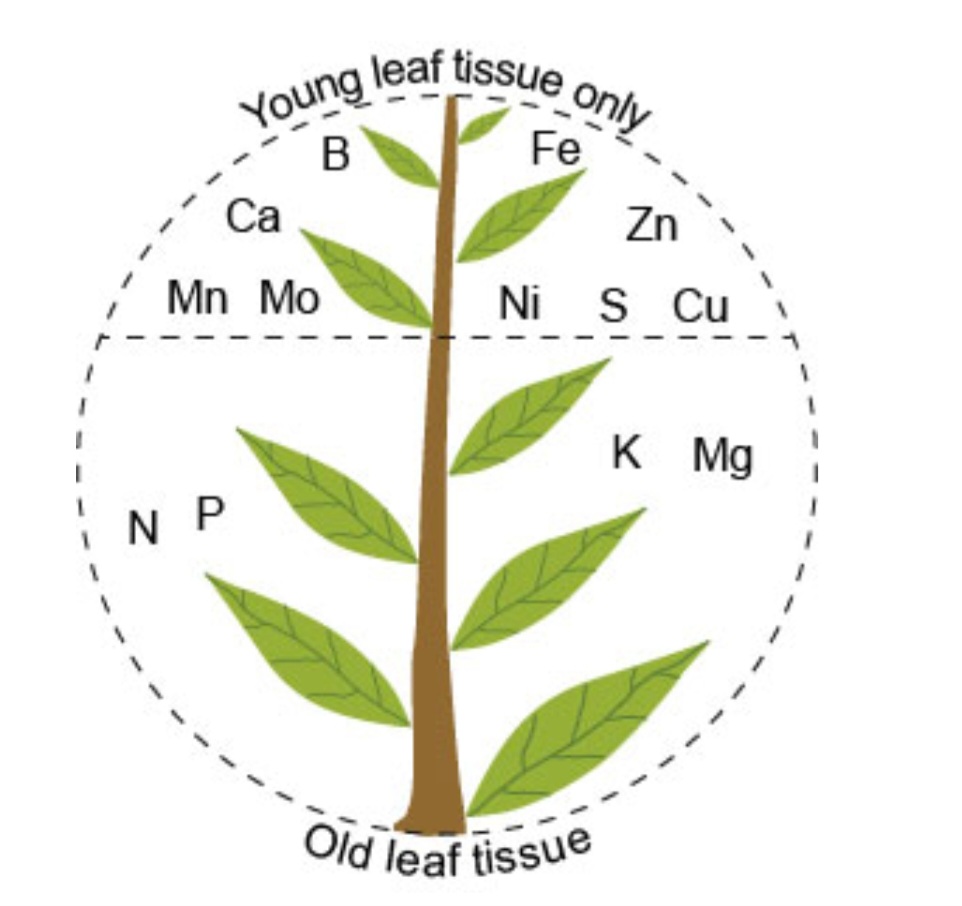
MOBILE NUTRIENTS IN PLANTS: A mobile nutrient is a substance that can move within a plant to where it is needed most, usually new growth. When a plant is deficient in mobile nutrients, the first signs appear in the older leaves. Examples of these mobile nutrients include:
Nitrogen in the form of nitrate, phosphorus (P) in the form of phosphate, potassium (K), magnesium (Mg), chlorine (Cl), zinc (Zn) and molybdene (Mo). These nutrients are transported to new growth from the older leaves.
The mobility of the nutrients within the plant determines where nutrient deficiency symptoms will show up. Mobile nutrients in plant tissue, like nitrogen, phosphorus, and potassium, can be translocated to newly developing leaves and growing portions of the plant and therefore, result in deficiency symptoms in the lower or older leaves.
IMMOBILE NUTRIENTS IN PLANTS
Immobile nutrients do not move easily within a plant. They are unable to be translocated, so when nutrient supply is low, the new growth is where the deficiency symptoms occur.
When a plant is deficient in immobile nutrients, the first signs appear in the new growth or young leaves. Examples of immobile nutrients include:
Calcium (Ca), sulfur (S), iron (Fe), boron (B) and copper (Cu) are immobile.
Plant do find it difficult to uptake sufficient amounts of immobile nutrients and transport them to the new shoots. Plants can transport immobile nutrients to other areas by making use of chelators. Moreover, aquatic plants can absorb immobile nutrients with their foliage, i.e. directly where they are needed. A deficit of these nutrients in terrestrial plants can be amended by foliar fertilization. Therefore, knowing the mobility of nutrients can help diagnose plant nutrient deficiencies.
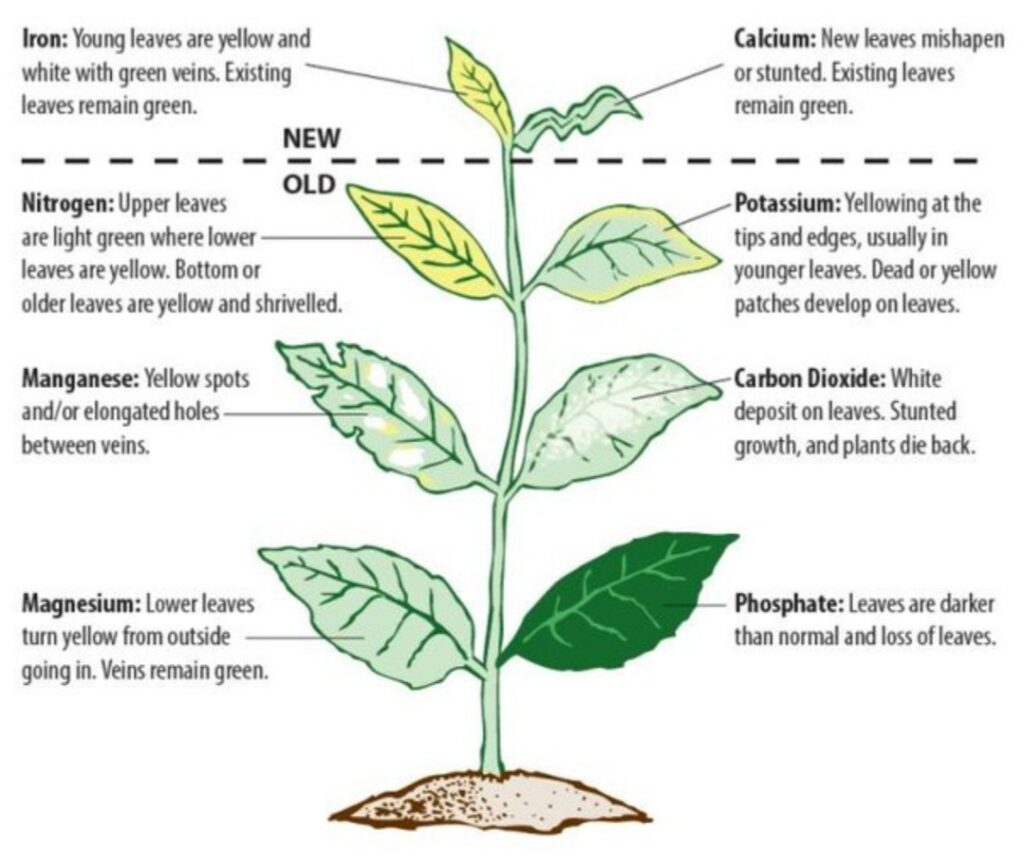
MOBILE AND IMMOBILE NUTRIENTS IN THE SOIL
There is a misconception about nutrient mobility in soil and plant. Most people and even soil scientist believe that when a nutrient is said to be mobile within the soil, it is also mobile or can be translocated within the plant.
The mobility of a nutrient in the soil is associated with how much of the nutrients can be leached in the soil . Nitrate or sulfate, for example can easily move with water. Other mobile nutrients in soil include potassium( K) which has low mobility, boron (Bo)and manganese (Mn). A good example of a nutrient that is immobile in soil are phosphorus (P), ammonium ( NH4-), magnesium (Mg), iron (Fe) and zinc (Zn).
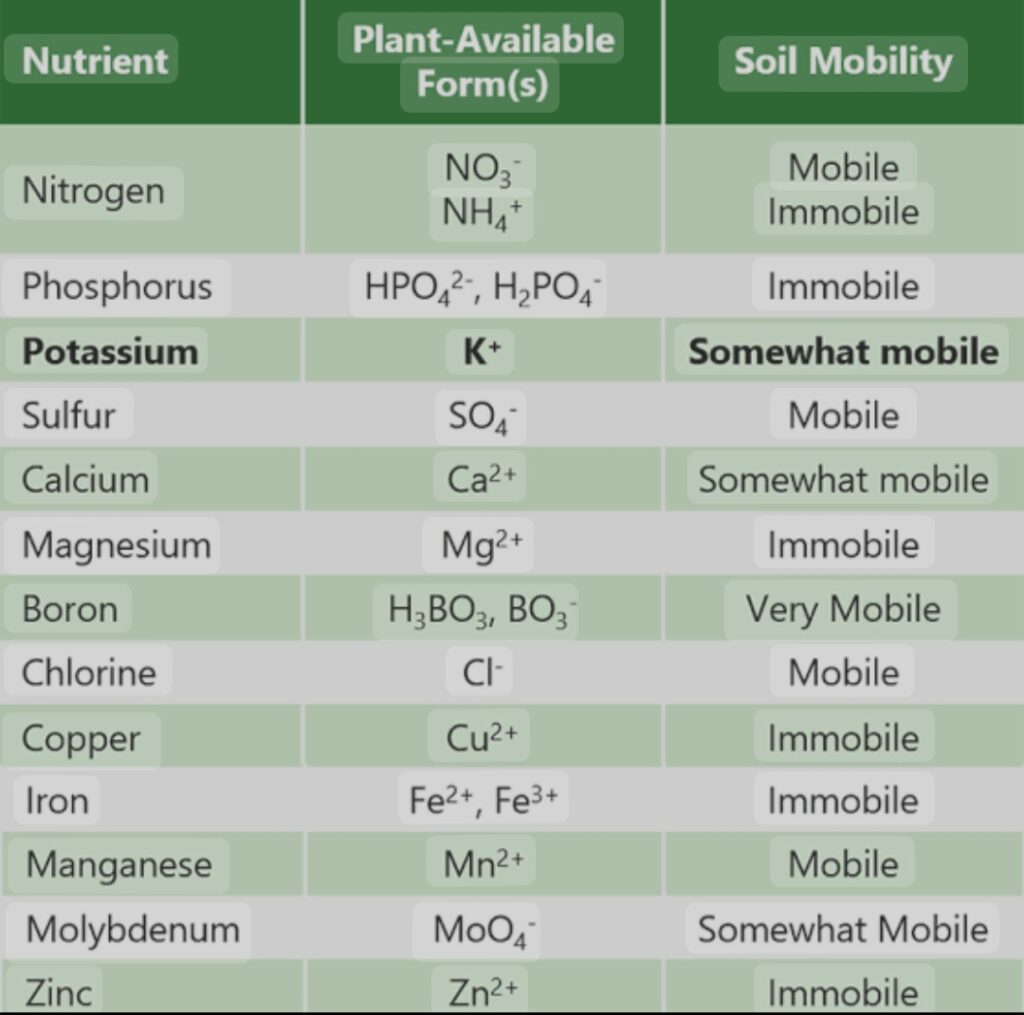
HOW NUTRIENT MOBILITY AND IMMOBILITY OCCURS IN SOIL
The soil generally is negatively charged and tries to attract positively charged nutrients. Some nutrients are negatively charged like nitrate-nitrogen and will be repelled from the soil exchange site. This will make such negatively charged nutrients to float and move freely in the soil and not held by the soil particles.
For nutrients in soil to be available to plants, they must exist as ions – molecules with either a positive or negative charge. Ions are simply atoms or molecules with a charge, either positive or negative. Positively charged ions (+) are called Cations, while negatively charged ions are called Anions (-). Among all essential nutrients, Boron is an exception because it is available to plants in a non-ionic form (no charge). Mobility of nutrients is due to the charge of each nutrient , whether +(Cation) or -(Anion) and also the strength of the charge as well.
a. NUTRIENT MOBILITY AND NUTRIENT CHARGES
From elementary physics, it is said that opposites charges attract and thesame charges repell. Hence, positively charged ions (Cations) typical bind to soil while negatively charged ions (Anions) are repelled by soil particles and float freely in soil solutions. These Anions(-) which are repelled by the soil particles float freely in the water in soil. The anions will want to disperse themselves to create an even concentrations in the solution, so they move from higher concentrations area to lower concentrations area.
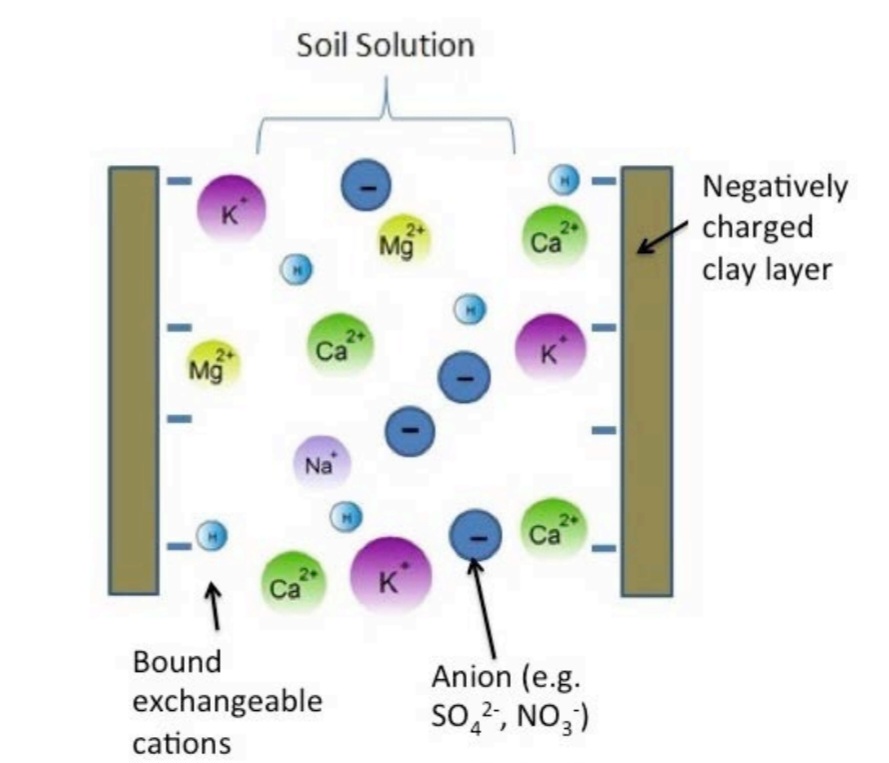
b. NUTRIENT MOBILITY AND NUTRIENT STRENGHT
Soil vary in composition so also they vary in charge strength. Soils generally maintain a negative charge with small pockets of positive charges intertwined. The strength of the soil charge is called the Cation Exchange Capacity which measures the number of cations that can be retained by soil particles. The higher the CEC, the more Cation nutrients that can be stored in the soil. This gives reason why higher CEC soils are rich in soil nutrients.
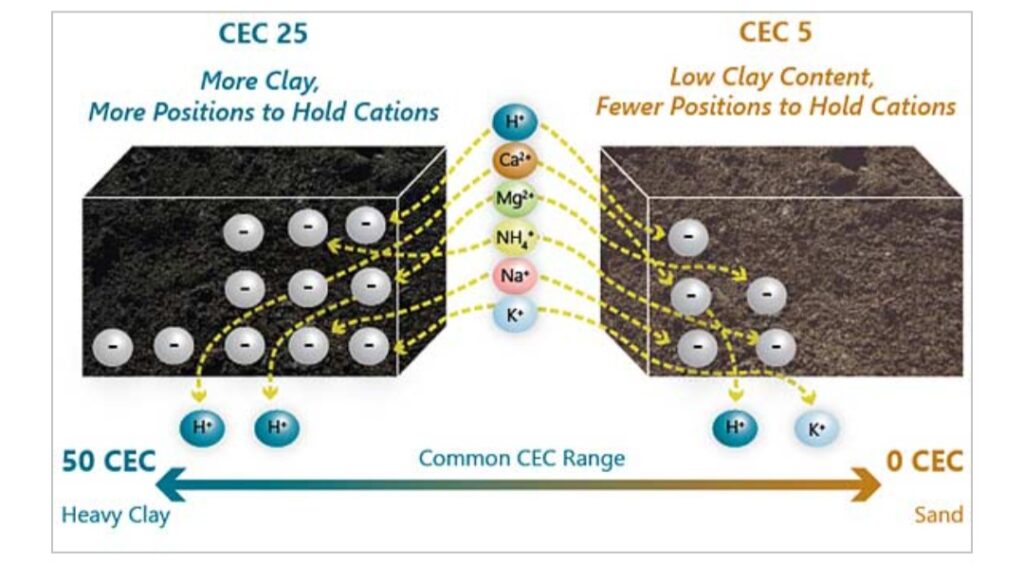
There are exceptions to certain Anions that are mobile in soils. Certain Anions like phosphorus bind tightly to soil particles. Phosphorus locks up to soil particles and becomes unavailable for plants uptake. This means that when the nutrients ( anions) are applied to the soil, farmers should ensure equal concentration of the Anions both at where the roots exist, and where the roots are not found. The nutrient (Anion) deficiencies will still therefore exist in the soil. Unlike cations, their deficiencies will only exist when there is lack of or inadequate sources of the Cation to have a direct contact with the root zone.
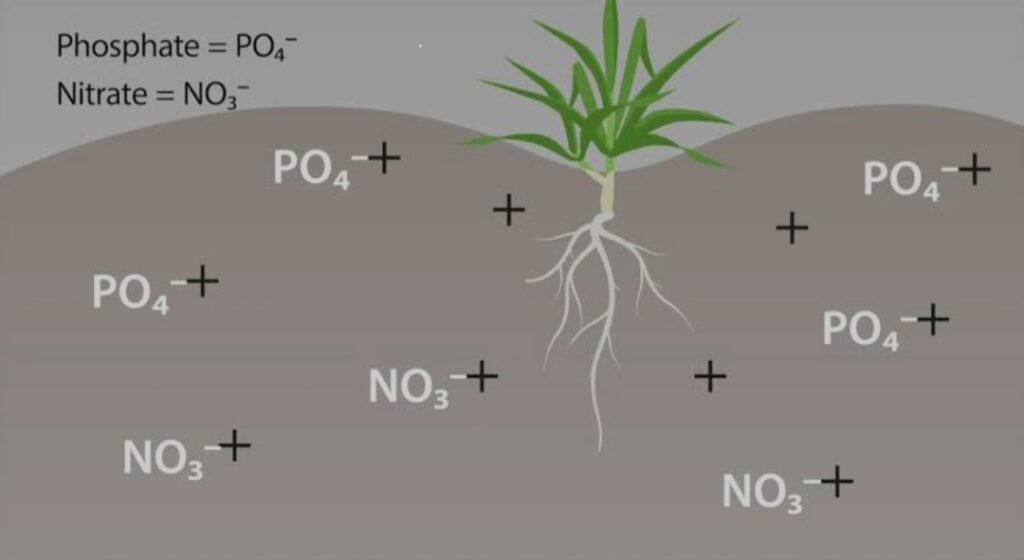
Other nutrients (Anions) which cannot be binded or held to soil particles are repelled into soil solution and float around the soil particles. They can easily be wash out of the soil or leached. On the contrary, nutrient cations bind to soil particles, therefore find it difficult to be washed out or leached off the soil even with excessive watering or heavy rain.
LEACHABLE NUTRIENTS
(MOBILE NURIENTS)
Some nutrients are easily leachable due to certain factors. Such factors include:
1 .TYPES OF NUTRIENTS: Nutrients such as nitrate, sulfate, boron, chloride and salt can easily be leached in the soil. Salts can be leached out of the soil through good drainage system.
2. TILLAGE OPERATION: When nutrients are added to the soil and tillage operation is carried out, the operation will help incorporate the nutrient into the soil, thus, make the nutrients to move down into the soil.
IMMOBILE NUTRIENTS
Immobile nutrients include, phosphorus, zinc, copper, potassium etc. If these nutrients are not placed properly or deep into the soil, they may not be accessible by plant roots. Plants need water to absorb the nutrients.
Immobile nutrients must not be applied to the soil surface as this may cause some problems like
a. loss of money
b. pollution of surface water ( causing algae bloom)
c. wash away by wind or water erosion.
d. Nutrient toxicity
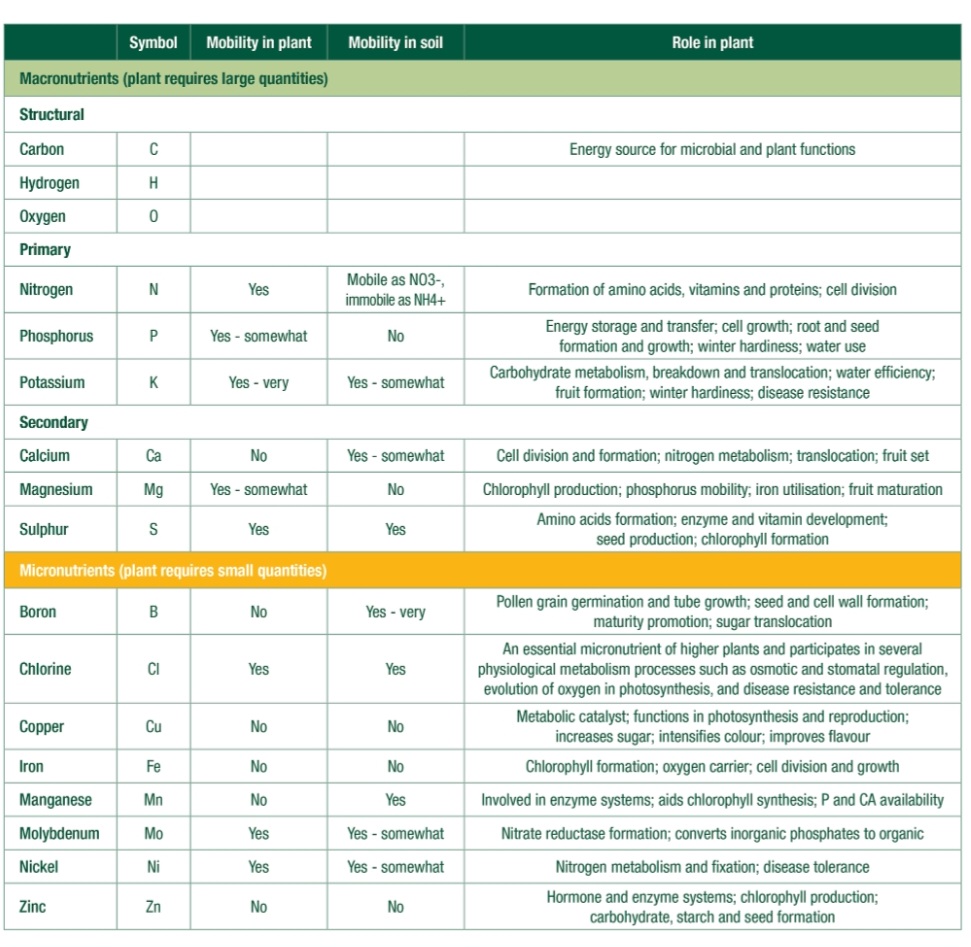
ACTIVITIES OF MOBILE AND IMMOBILE SOIL NUTRIENTS WHEN ABSORBED BY PLANTS
Once mobile and immobile soil nutrients are uptake by plant and get inside the plant, the mobile and immobile nutrients action changes. Mobile nutrients have the ability to move from one place to another within the plant. The plant moves them to where they are most needed which is typically new growth. That is why mobile nutrient deficiencies show up first in old growth. The plant can also pull the mobile nutrients from the old growth parts of the plants to where they are more needed ( new growth areas of the plant). On the other hand, immobile nutrients are permanently positioned (or missing) from when that specific part of the plant has formed. Once they have been put in place, they stay permanently. So, when the plant is growing new shoots, buds, and leaves, if there is an inadequate availability of immobile nutrients available to the roots, deficiencies will show in the new growth as it is developed. Additionally, the deficiencies can not be reversed at the sites where they occur.
